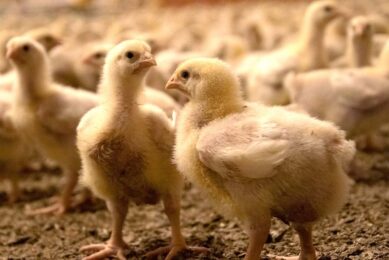In-ovo feeding for optimising poultry production
In-ovo feeding technology has established a new science of perinatal nutrition that will open opportunities for greater production efficiency and animal welfare.
It may even be a necessary means to optimise poultry production, concluded Peter Ferket (North Carolina State University) and Zehave Uni (Hebrew University of Jerusalem, Israel) at the Alltech Symposium in Lexington, Kentucky held this week.
The incubation and neonatal periods account for about 50% of the productive life of a 2-kg market broiler. The perinatal period, the last 4 days before hatch through the first 4 d after hatch, is most critical for development and survival of commercial broilers, the research states.
It is also the period during which nutritional conditioning and perinatal programming can occur. The perinatal chick makes the metabolic and physiological transition from nutrition supplied in the egg to feed, and it is functionally ‘programmed’ to adopt to its environment.
Insufficient nutrient supply
A chicks first meal occurs when they consume the amnion fluid before internal piping. Due to restricted feeding of parent stock and egg production rate and other stress related issues the nutrients in the amnion fluid may be lacking critical nutrients.
Supplementing the amnion fluid with appropriate nutrients is a novel way to feed critical dietary components to embryos. Indeed this ‘in ovo-feeding’ may ‘jump-start’ development of the chick.
Advantages
Ferket and Uni signal several advantages of in-ovo feeding:
• Improved digestive capacity,
• Increased growth rate and feed efficiency,
• Reduced post-hatch mortality and morbidity,
• Improved immune response to enteric agents,
• Reduced incidence of developmental skeletal disorders, and
• Increased muscle development and breast meat yield.
In laboratory trials in-ovo feeding has increased hatchling weights by 1-7% over controls and this advantage has been observed to sustain at least 35 days.
Positive effects have been observed with in-ovo feeding solutions containing NaCl, sucrose, maltose, and dextrin beta-hydroxy-beta-methyl butyrate, arginine, egg white protein, and Zn-methionine.
The scientists also said that in-ovo feeding clearly advances the digestive capacity, energy status, and development of critical tissues of the perinatal chick about 2 to 3 days.
Join 31,000+ subscribers
Subscribe to our newsletter to stay updated about all the need-to-know content in the poultry sector, three times a week. Beheer
Beheer








 WP Admin
WP Admin  Bewerk bericht
Bewerk bericht